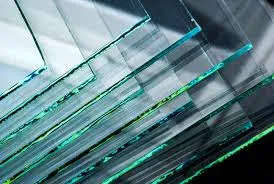The Evolution and Impact of Architectural Glass Products
In recent years, architectural glass products have emerged as a vital component in modern construction and design, shaping how buildings are constructed and how they interact with their surroundings. These elements not only enhance aesthetics but also contribute significantly to energy efficiency, sustainability, and functionality.
Architectural glass is no longer limited to mere windows and facades; it encompasses a wide array of products that include laminated glass, double-glazed units, insulating glass, and specialty glass such as tinted, coated, or patterned varieties. Each of these products serves a unique purpose, catering to the diverse needs of architects and designers who seek to push the boundaries of creativity within their projects.
One of the most significant advancements in architectural glass is the introduction of energy-efficient glazing systems. Insulating glass units (IGUs) are designed to reduce heat loss and gain, improving the overall energy efficiency of buildings. These systems effectively minimize reliance on heating and cooling systems, thereby reducing carbon footprints and operating costs. In a world increasingly focused on sustainability, such innovations align with the global agenda for greener building practices.
Furthermore, the aesthetic versatility of architectural glass allows it to be a key feature in contemporary design. From shimmering glass facades that reflect their urban environment to artfully designed partitions that create seamless transitions in space, glass is used as a medium for expressing creativity and sophistication. Many modern architectural masterpieces, such as the Louvre Abu Dhabi and the Crystal Bridges Museum of American Art, utilize glass to create breathtaking environments that forge a connection between the inside and outside worlds.
architectural glass products
Safety and reliability are crucial considerations in architectural glass products. Advances in glass technology have led to the development of stronger, more durable materials that can withstand various environmental stresses, including wind, impact, and temperature fluctuations. Laminated and tempered glasses are designed to provide safety in case of breakage, adding an essential layer of protection in both residential and commercial applications.
Additionally, the role of architectural glass in promoting natural light cannot be overstated. It enhances the quality of indoor environments by providing access to daylight, which has been shown to improve mood, productivity, and overall well-being. Architects are increasingly using large glass panels to create open and airy spaces that foster a connection between the interior and exterior, blurring the lines between different environments.
As we move forward, the future of architectural glass products looks promising. Innovations in smart glass technology, which allows for controlled transparency and energy management, are on the horizon, potentially revolutionizing the built environment. The continuous evolution of architectural glass products suggests a future where aesthetics, sustainability, and safety coexist seamlessly.
In conclusion, architectural glass products play an indispensable role in modern architecture. Their versatility, energy efficiency, and ability to enhance visual appeal make them a preferred choice for architects and designers alike. As technology advances, the possibilities for glass in architecture will only continue to expand, shaping the skylines of tomorrow.
 Afrikaans
Afrikaans  Albanian
Albanian  Amharic
Amharic  Arabic
Arabic  Armenian
Armenian  Azerbaijani
Azerbaijani  Basque
Basque  Belarusian
Belarusian  Bengali
Bengali  Bosnian
Bosnian  Bulgarian
Bulgarian  Catalan
Catalan  Cebuano
Cebuano  Corsican
Corsican  Croatian
Croatian  Czech
Czech  Danish
Danish  Dutch
Dutch  English
English  Esperanto
Esperanto  Estonian
Estonian  Finnish
Finnish  French
French  Frisian
Frisian  Galician
Galician  Georgian
Georgian  German
German  Greek
Greek  Gujarati
Gujarati  Haitian Creole
Haitian Creole  hausa
hausa  hawaiian
hawaiian  Hebrew
Hebrew  Hindi
Hindi  Miao
Miao  Hungarian
Hungarian  Icelandic
Icelandic  igbo
igbo  Indonesian
Indonesian  irish
irish  Italian
Italian  Japanese
Japanese  Javanese
Javanese  Kannada
Kannada  kazakh
kazakh  Khmer
Khmer  Rwandese
Rwandese  Korean
Korean  Kurdish
Kurdish  Kyrgyz
Kyrgyz  Lao
Lao  Latin
Latin  Latvian
Latvian  Lithuanian
Lithuanian  Luxembourgish
Luxembourgish  Macedonian
Macedonian  Malgashi
Malgashi  Malay
Malay  Malayalam
Malayalam  Maltese
Maltese  Maori
Maori  Marathi
Marathi  Mongolian
Mongolian  Myanmar
Myanmar  Nepali
Nepali  Norwegian
Norwegian  Norwegian
Norwegian  Occitan
Occitan  Pashto
Pashto  Persian
Persian  Polish
Polish  Portuguese
Portuguese  Punjabi
Punjabi  Romanian
Romanian  Russian
Russian  Samoan
Samoan  Scottish Gaelic
Scottish Gaelic  Serbian
Serbian  Sesotho
Sesotho  Shona
Shona  Sindhi
Sindhi  Sinhala
Sinhala  Slovak
Slovak  Slovenian
Slovenian  Somali
Somali  Spanish
Spanish  Sundanese
Sundanese  Swahili
Swahili  Swedish
Swedish  Tagalog
Tagalog  Tajik
Tajik  Tamil
Tamil  Tatar
Tatar  Telugu
Telugu  Thai
Thai  Turkish
Turkish  Turkmen
Turkmen  Ukrainian
Ukrainian  Urdu
Urdu  Uighur
Uighur  Uzbek
Uzbek  Vietnamese
Vietnamese  Welsh
Welsh  Bantu
Bantu  Yiddish
Yiddish  Yoruba
Yoruba  Zulu
Zulu 

